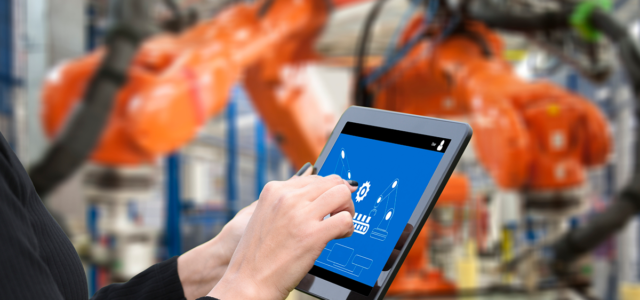In Part 1 of this FaceID article series, we explored retail applications in USA / UK and were introduced to the face as the next computer cookie. Part 2 introduces us to GAFAM and face recognition in the security and health care industry sectors.
Security has been a primary market for face recognition for some time. Threats of terrorism and violent crime have accelerated its adoption by governments and law enforcement worldwide.
STOP, I Can Digitally See You Now
With a 25% CAGR, the security sector is leading facial recognition deployments worldwide.
From London, Tokyo, Helsinki, Rome and now to Atlanta in USA, airports worldwide are adopting FaceID solutions. Delta Airlines will soon roll out ‘ curb to gate’ facial recognition for travellers departing out of the International Terminal F in Atlanta, the first biometric terminal in the United States. Smile for the camera at self-service check-in including baggage, through security checkpoints, and boarding your flight. Using the technology is optional and will save travellers up to nine minutes per flight.
- NEC has already provided biometric identification systems, including facial recognition to approximately 50 airports around the world. Shanghai’s Hongqiao airport unveiled kiosks for flight and baggage check-in, security clearance, and boarding powered by facial recognition.
- The Federal Bureau of Investigation’s database contains over 30 million mugshots of criminals and ID card images.
- Implemented in 2010 and upgraded in 2016, the New York facial recognition system connects to the databases of ID photos and identify information recorded by the Department of Motor Vehicles. Since implementing the upgrade, the governor claims the software has led to more than 4,000 fraud arrests involving criminals attempting to steal identities.
- Uber uses driver selfies to verify driver identifies before approving passenger rides.
- Australia is developing its own crime-fighting facial recognition surveillance system that can match citizen’s faces in real time. “The technology collects driver’s license photos, passport pictures, visa application images, and other photos from state and federal government sources, and pools them in a database. All that biometric data is then compared to images culled from CCTV footage and other surveillance equipment to identify people”
- “Travelers departing from Dubai will no longer need to pass through any sort of security clearance counter or e-gate, they will simply walk through a virtual aquarium tunnel that will scan their face or iris using hidden cameras.” The fish displayed in the tunnel invite you to look around at the over 80 cameras to establish your FaceID.
- This fall, new facial recognition technologies identified three impostors trying to enter the United States at Washington Dulles Airport with fake passports.
Your Face Tells Me You Are Sick
Substantial face recognition opportunities are emerging in the healthcare sector. Through face technology and deep learning, “it is already possible to track a patient’s use of medication more accurately, detect genetic diseases such as DiGeorge Syndrome with a success rate of 96.6%, and support pain management procedures.”
An example healthcare solution is from AiCure which tackles the problem of patients failing to take their medicine. This is a major USA challenge for approximately 50% of patients, leading to an estimated $100 billion in annual costs from hospital admissions.
Follow the Major Disruptors Money
The investments being made by Google, Apple, Facebook, Amazon, and Microsoft (GAFAM) are a good indicator of the potential future direction and growth of disruptive technologies such as face recognition.
- Apple acquired Emotient, a startup that uses artificial intelligence (AI) to read people’s emotions by analyzing facial expressions.
- Facebook acquired MSQRD, a face-swapping app and FacioMetrics which uses machine learning to let smartphones analyze faces in real time through the frame of a camera.
- Google acquired PittPatt which matches people across photos/videos, Moodstocks which develops machine-learning based image recognition for smartphones, and Viewdle which can automatically tag photos.
- Microsoft has so far filed 56 patents in facial recognition and is Number 1 in the top 10 most active organizations with this technology.
- Amazon acquired Orbeus which uses deep learning to provide scalable image and face recognition solutions for businesses and consumers.
The Face Recognition Infused Platforms
FaceID investments have been surfacing in each of the GAFAM software platforms for some time.
- In 2014, Facebook launched DeepFace which can determine whether two photograph faces belong to the same person with an accuracy of 97.25%.
- In 2015, Google introduced FaceNet, “a new recognition system with unrivalled scores: 100% accuracy in the reference test Labeled Faces in The Wild, and 95% on the YouTube Faces DB.”
- In May 2018, Amazon was reported as already actively promoting its Rekognition cloud-based face recognition service to law enforcement agencies. The solution recognizes as many as 100 people in a single image and can perform face match against databases containing tens of millions of faces.
- Microsoft has accelerated development of facial recognition solutions. Major focus is on self-learning systems that can be used for people recognition in events, live presentations, and movies.
- Unlocking the smartphone with your face normalized face recognition as just another daily use technology. At the iPhoneX release, “people raced to test its (face) limits and see if they could break it…Then the hype died down, and people with the iPhone X simply got used to opening their phone with a glance. It proved that facial recognition tech had finally become sharp enough to be useful. It wasn’t just cool; it was convenient. A year later, we’re all a lot more used to it.” The latest iPad just released in October is also transitioning to facial recognition.
Technology convergence and applications outside traditional security are leading to more powerful FaceID based solutions. The combination of artificial intelligence, machine learning, Internet-of-Things (IoT), and cloud computing, plus ever hungry global innovation hubs are accelerating traditional product cycles.
All industries including security are being disrupted by new multi-technology layered innovative solutions. Everyone is now fully aware that the future requires continuous fine tuning (often software driven) of business models to deliver immersive customer experiences.
Article by channel:
Everything you need to know about Digital Transformation
The best articles, news and events direct to your inbox
Read more articles tagged: Cyber Security, Featured







